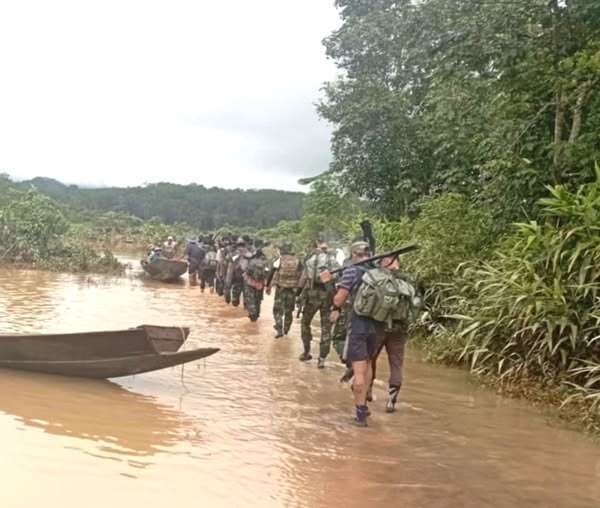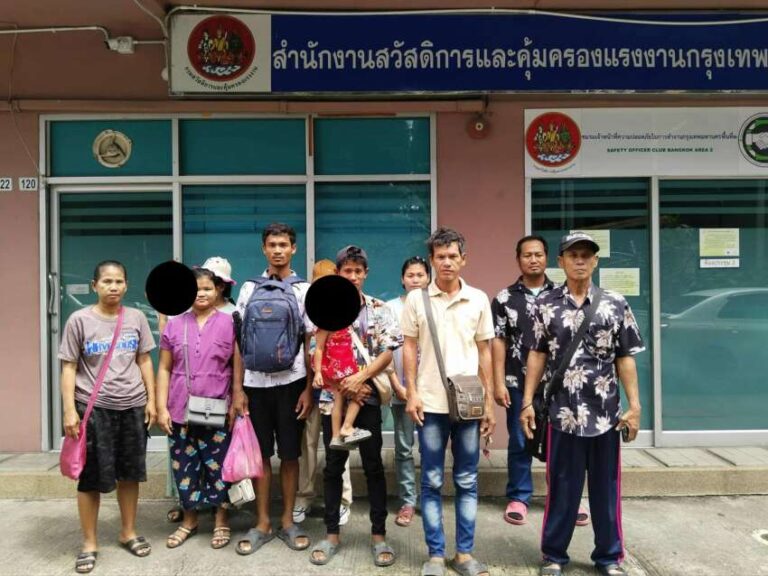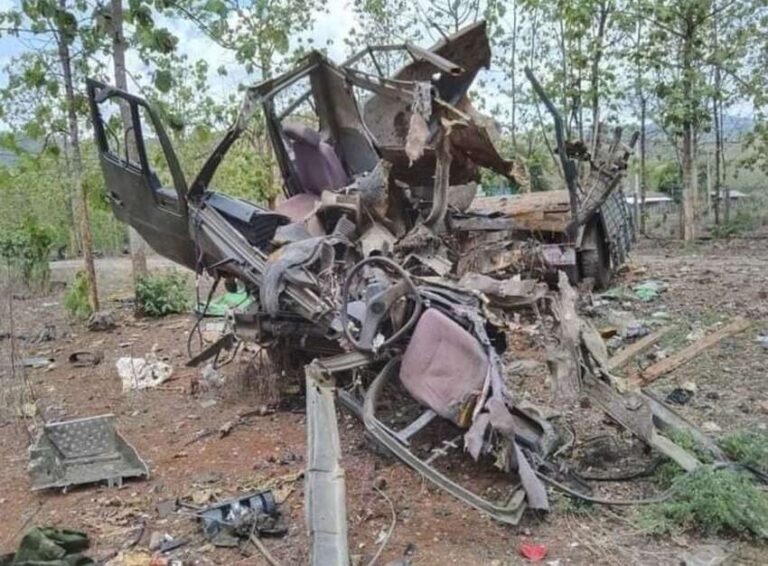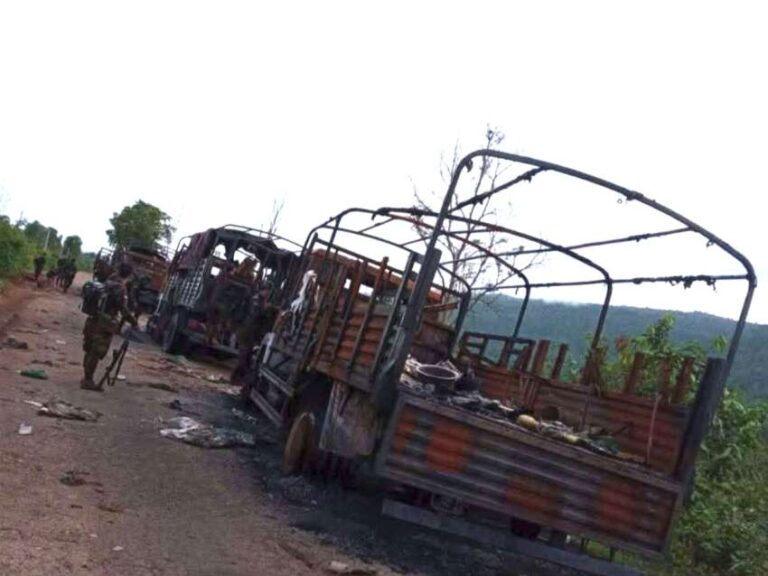
A spokesperson from the Myeik People’s Defense Force has confirmed an attack on a military council vehicle heading to Battalion 306 in Myeik, Tanintharyi Region. The incident occurred around 2 PM on June 24, when revolutionary forces intercepted and attacked a military vehicle traveling from Myeik to Battalion 306 at a location known as Kanpani, between Hamphoe and Kanto villages. The attack resulted in military council casualties, though the exact number could not be confirmed. The revolutionary forces successfully withdrew from the operation without sustaining any casualties, according to the official statement.
The operation was jointly conducted by the Bogyoke Hring Force, Myeik PDF, and PDF Zone 3. Simultaneously, in Meiktila Township, Mandalay Region, another engagement took place where resistance forces attacked a military council column consisting of hundreds of troops, resulting in three confirmed military casualties. This was confirmed by an official from the Danu State National Defense Army (DSNDA).
The Meiktila confrontation occurred around 6 PM on June 24, when revolutionary forces ambushed a military column from Division 99 between Auntun and Gwetautkhan villages. The ensuing firefight lasted approximately 30 minutes, during which three military council soldiers were killed and many others were wounded. The military council deployed forces numbering in the hundreds, and although they initially withdrew to nearby areas after the battle, they resumed their offensive operations the following morning, as reported by the DSNDA official.
This operation was a coordinated effort between revolutionary forces from Meiktila and Thazi townships, the Thaungtha People’s Defense Force, and the Danu State National Defense Army. The resistance forces have warned local civilians to remain prepared as the military council may launch offensives from multiple directions. The continued military operations in these regions demonstrate the ongoing conflict between revolutionary forces and the military council, with resistance groups maintaining their defensive positions while protecting civilian populations.



